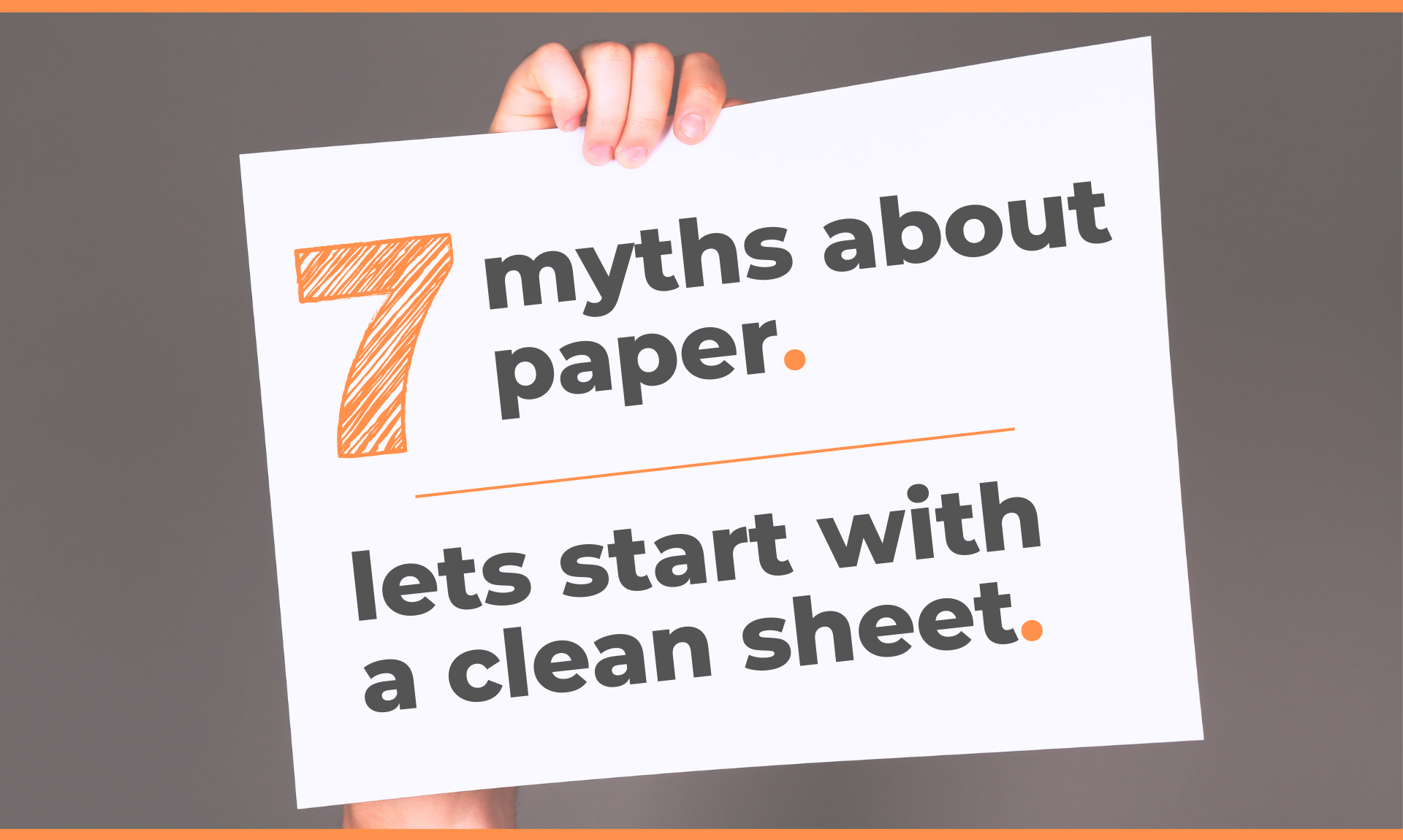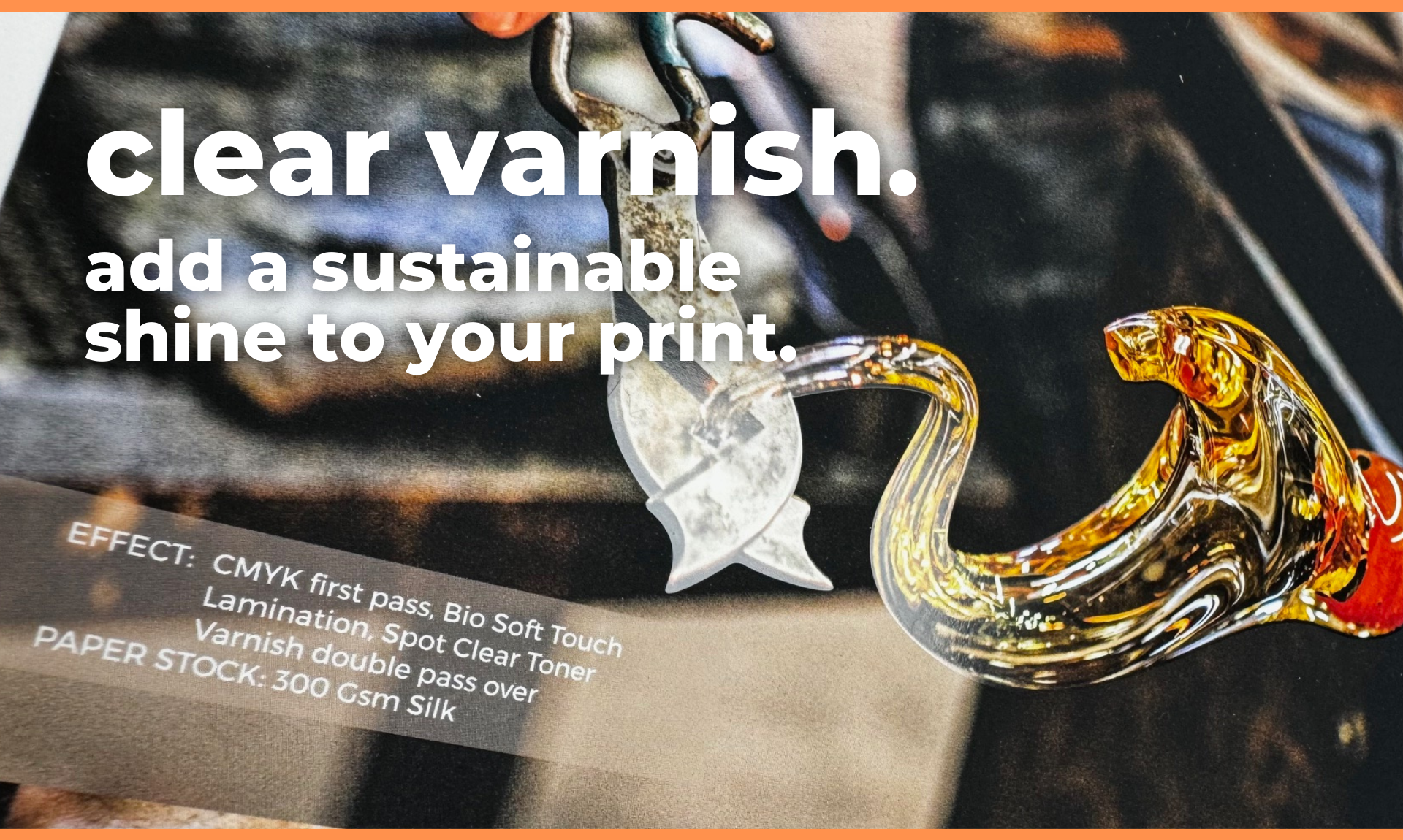Let’s put the record straight on all the myths about paper.
Myths are everywhere, aren’t they? We seem to love them just as much today as we ever did. From your legend type myths like the good old Loch Ness monster and Bigfoot. To more day-to-day myths like ‘go outside with wet hair and you’ll catch a cold’ or ‘we only use 10% of our brain’. And myths about paper are easy to hear because we’re in a digital influenced world. But many of those myths are misconceptions.
So we thought, lets put the record straight and start again with a clean sheet…. of paper!
We partner with Two-Sides UK, a not-for-profit global initiative working hard to dispel these misunderstandings and promote the sustainable attributes of print, paper, and paper packaging. Their members span the entire print, paper & packaging value chain. And our partnership with them has given us access to a whole host of info that sets the record straight when it comes to common misconceptions around paper.
We’ve set out below seven of the most common myths about paper, or incorrect arguments. And we’re giving you some pretty decent facts and figures to set the record straight.
1. It’s bad for the environment
It’s not uncommon for people to assume that paper communications are bad because they’re read and then immediately thrown away, contributing towards waste. Paper is actually one of the most recycled resources we have, with the paper recycling rate in Europe the highest in the world at 74%. And 78% is seen as the practical max due to things such as the fibre quality and the ability to actually collect 100% of consumption.
On average, paper is recycled and reused 3.8 times. And according to the European Paper Recycling Council Monitoring Report, In Europe, 56 million tonnes of paper was collected and recycled in 2020.
2. Digital communications are more environmentally friendly
This is a biggie. Many individuals believe paper-based communications are less environmentally friendly, and have an increased environmental footprint, when compared to digital. But if you dig deeper, that’s not the picture. The paper and print industry is one of the leading sectors when it comes to renewable energy and mitigating carbon impact. In Europe, the paper sector is the biggest user of renewable energy, and is responsible for just 0.8% of Europe’s greenhouse gas emissions. Compare that with around 3.7% for the ICT industry.
3. Paper isn’t sustainable
We’ve already stated that paper is recycled on average 3.8 times. And whilst wood is a natural, renewable source, the myth that paper isn’t sustainable still exists. Organisations like the Forest Stewardship Council (FSC) actively work to correct this. The FSC are a not-for-profit organisation that promotes responsible management of the world’s forests. They aim to ensure raw materials are sourced from sustainable forests and utilised by businesses across the world.
4. Forests are shrinking because of the paper industry
This might be the biggest misconception. Over 85% of consumers think, in some way, shape or form, that forests are shrinking because of the paper industry. However, that’s not quite right. Between 2005 and 2020, European forests that provide the pulp and paper for our industry grew by 58,390km sq. That’s a much larger surface area than Switzerland! Or if you want it another way, 1,500 football pitches per day.
5. Communicating via paper is old school
We’re always hearing, from marketers mainly, how paper communications are dead. A thing of the past. But out in the real world it’s not true. Paper-based marketing and communication methods continue to hold their own. Even in the supposed age of digital dominance:
The WARC Direct Mail Effectiveness Report shows 70% of people have been driven to an online activity by direct mail.
Branding is 185% in print advertising than in digital advertising. (Source: Newsworks, Print vs Digital Advertising)
And ad recall is 1.7 times higher for ads within print news brands than digital news brands. (Source Newsworks. Print vs Digital Advertising)
6. People prefer going online
It’s assumed that the preferred way for people to receive information from businesses is digitally, however, 32% of people believe they suffer from digital overload and a further 49% of people agree they spend too much time on devices.
Paper-based communications offer users a welcome respite from screens, providing an opportunity for a much-needed digital detox. And 74% of people want the right to choose how they receive bills or statements, proving that paper communications are still relevant and utilised in the channel mix. (Source: Two Sides)
7. People don’t respond to print
Digital adverts are everywhere you go – from TVs to billboards and even on mobile phone devices, so it’s assumed that this is the medium that generates higher response rates. However, 31% of people are more likely to act when receiving an advertisement in the post, as opposed to seeing it online.
But that’s just one stat. Click here to read more about how direct mail performs in the house and get some top stats on trust, grabbing attention, impact over time. For more stats on , click through here:.
And one last thing…
So there you go. 7 misconceptions and myths about paper, 7 answers. Whilst that should help you feel more comfortable and happier about continuing to work with print to deliver your objectives, it’s important to work with a printer who prioritises genuine sustainability. So we’ll just leave you with this – two of the clearest, and most important, things to look out for, and ask of your print partner are:
Are you FSC certified?
We are. And we’re dead proud to be FSC certified. The FSC are fiercely protective of their certification and hold you to demanding standards and practices. This video shows exactly what the FSC does and what it means to be FSC certified.
Are you ISO14001 accredited?
Look out for ISO 14001. This accreditation is central to identifying an organisation committed to sustainability (we’re accredited by the way!). ISO14001 is the principal standard specifying the requirements for the formulation and maintenance of a fully integrated Environmental Management System. An EMS drives a company’s processes and ensures their legal compliance, streamlining operations, more effectively allocating time and resources, reducing waste, and increase overall site-wide efficiency.
Ahem, we are. By the way. If you were wondering.
Should we talk about your print? Contact us and let’s get going!







